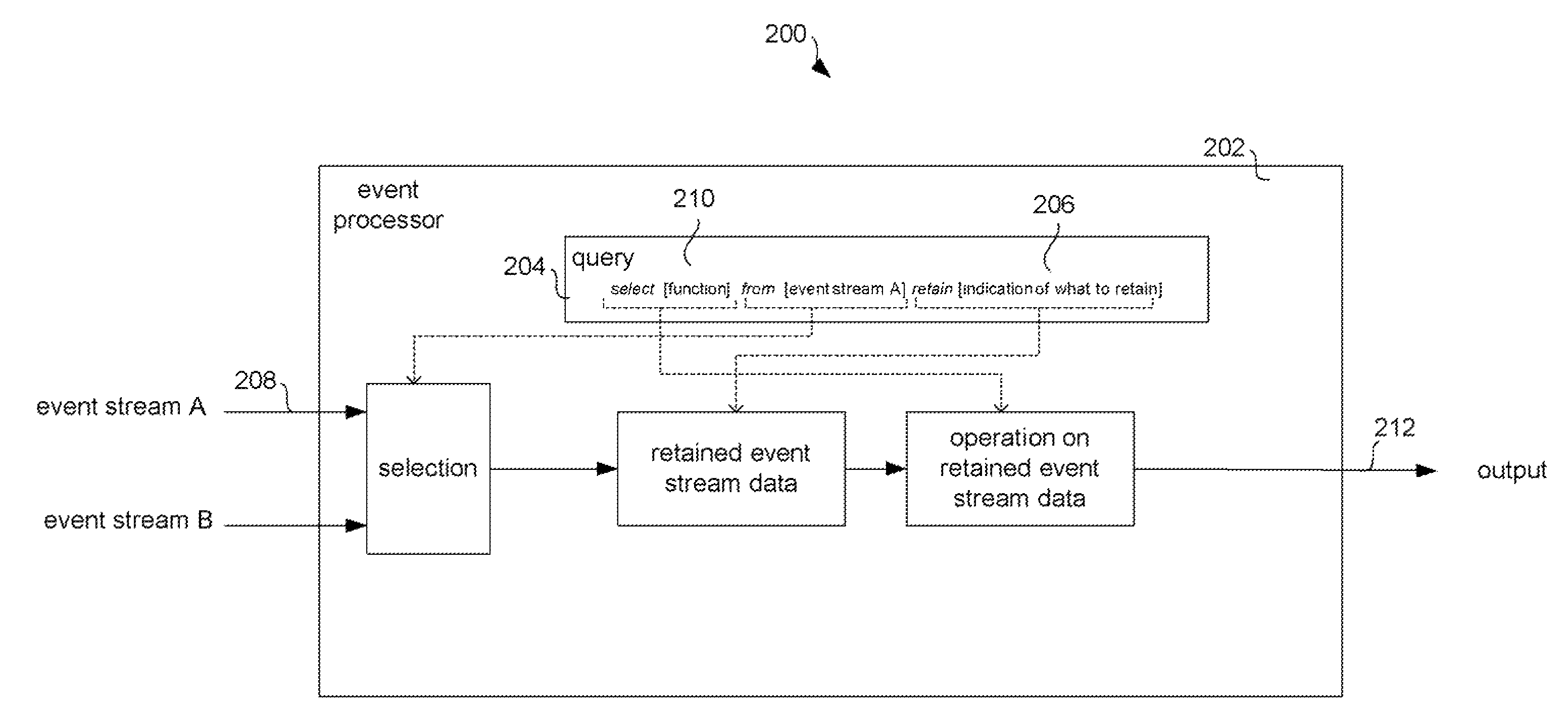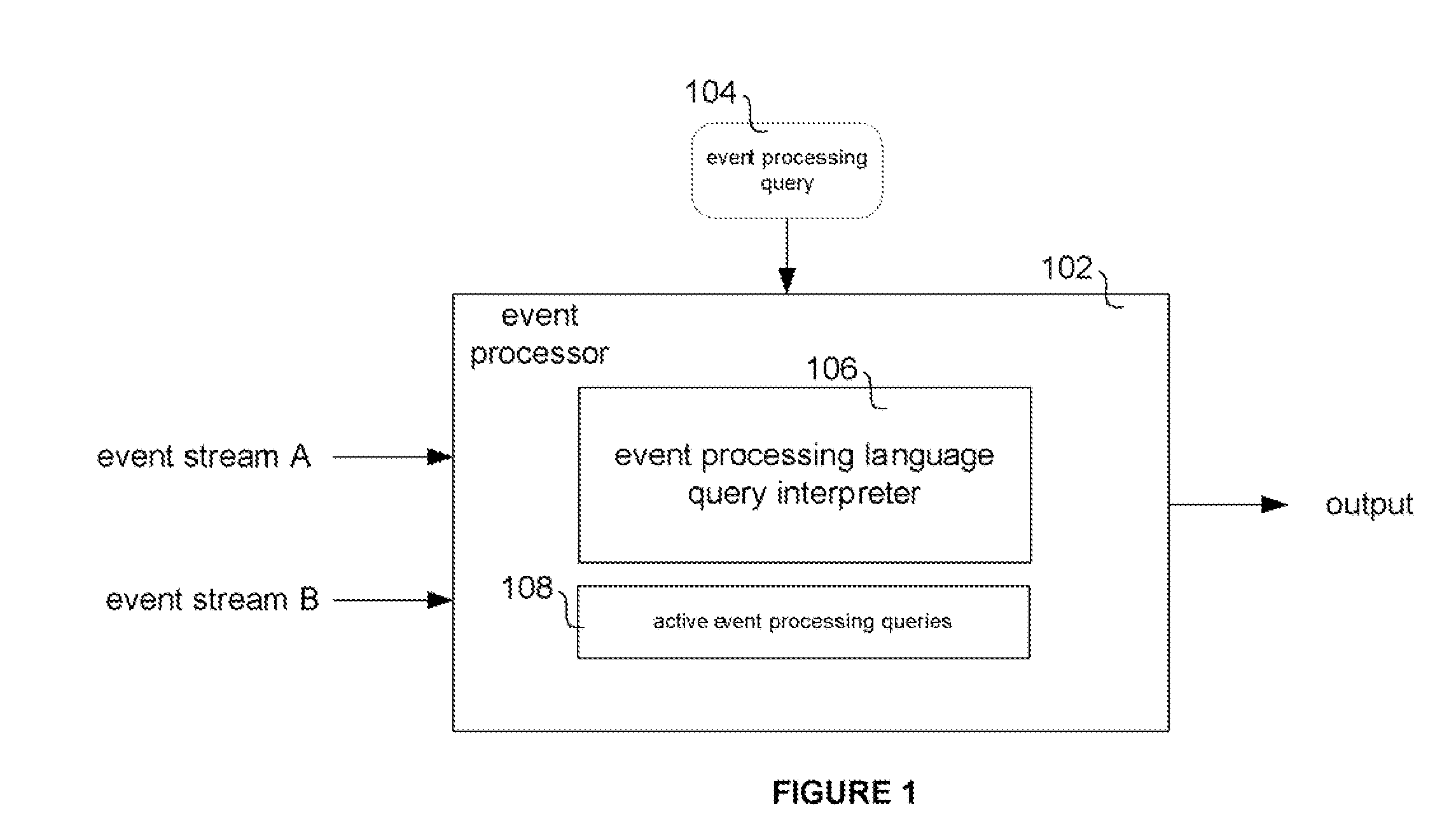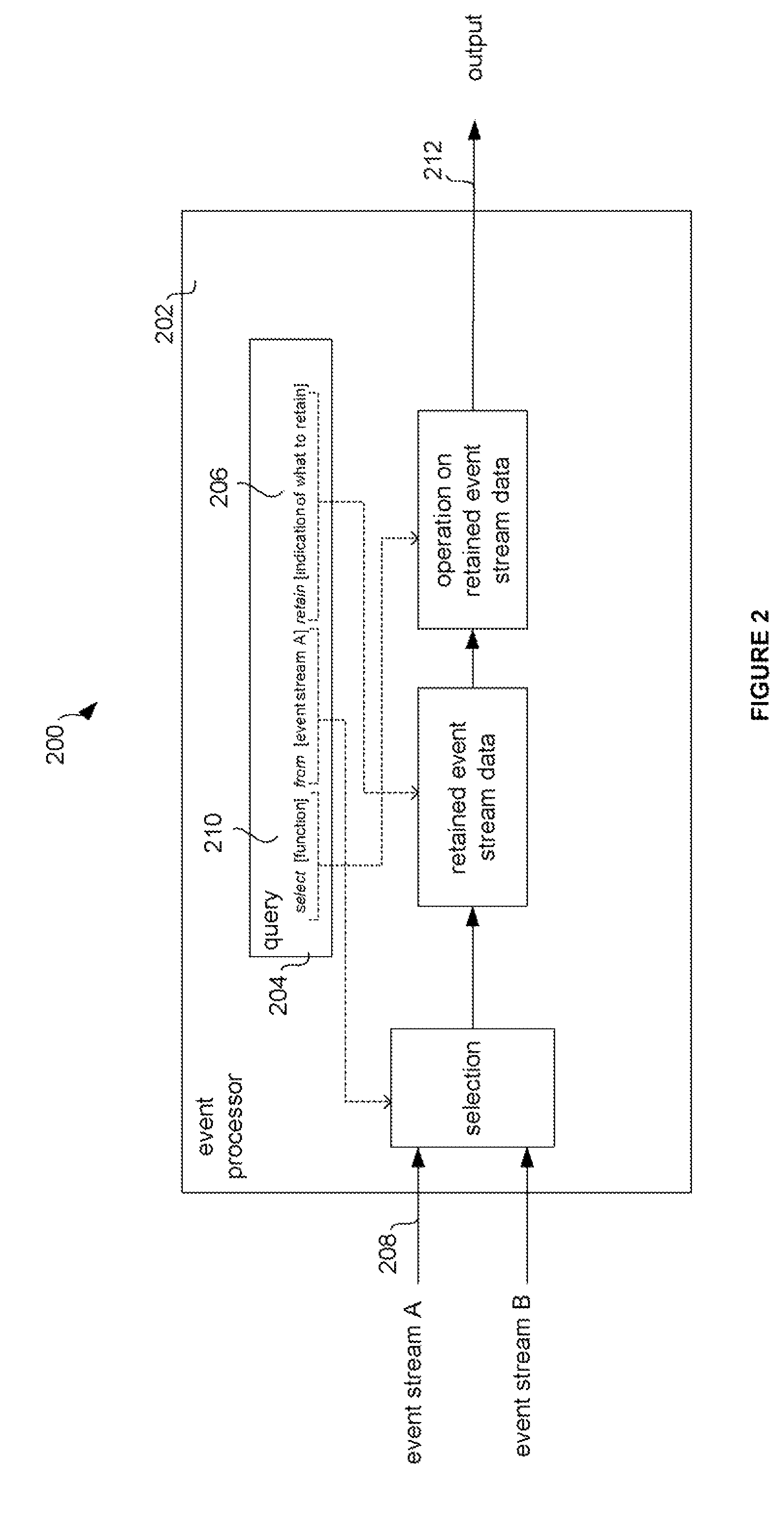Event processing query language including retain clause
a query language and event technology, applied in the field of event processing query language including retain clause, can solve the problems of affecting performance, degrading performance, and not being able to expect a ui,
- Summary
- Abstract
- Description
- Claims
- Application Information
AI Technical Summary
Benefits of technology
Problems solved by technology
Method used
Image
Examples
Embodiment Construction
[0018]FIG. 1 shows an example of a system where event processor 102 operates on one or more event streams. In this example, event streams A and B are sent to the event processor 102. The event processing language queries can be used by the event processor 102 to operate on the event streams.
[0019]In one example, the event processing language queries 104 are interpreted by an event processing query language interpreter 106. Queries 108 can then operate on event streams.
[0020]FIG. 2 shows an exemplary computer implemented system 200 comprising an event processor using queries to operate on an event. At least some event processing queries includes a “retain” clause that limits the amount of data over which the query is run.
[0021]FIG. 2 is a functional diagram. In the example of FIG. 2, the query 204 includes a retain clause 206 that is used by the event processor 202 to determine how much of the event stream data 208 to retain for processing.
[0022]The retained event data can be process...
PUM
 Login to View More
Login to View More Abstract
Description
Claims
Application Information
 Login to View More
Login to View More - R&D
- Intellectual Property
- Life Sciences
- Materials
- Tech Scout
- Unparalleled Data Quality
- Higher Quality Content
- 60% Fewer Hallucinations
Browse by: Latest US Patents, China's latest patents, Technical Efficacy Thesaurus, Application Domain, Technology Topic, Popular Technical Reports.
© 2025 PatSnap. All rights reserved.Legal|Privacy policy|Modern Slavery Act Transparency Statement|Sitemap|About US| Contact US: help@patsnap.com



